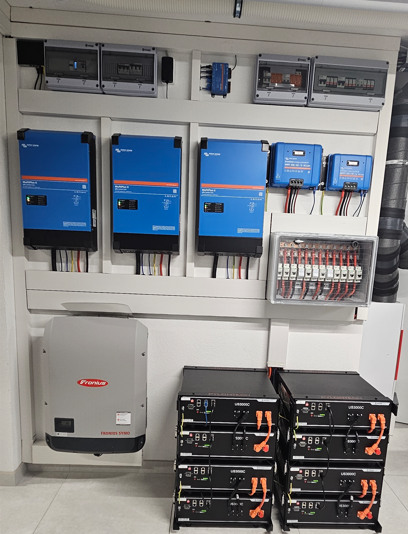- Hello,
I've just finished my system upgrade, and during regular operation everything works as expected so far. The setup is as follows:
- 3x Multiplus-II 5000
- 1x MPPT 250 (~ 4300 Watts of Solar)
- 1x MPPT 150 (~ 3700 Watts of Solar)
- 1x Fronius Symo 12.5 (~8000 Watts of Solar), AC coupled on AC-OUT.
- 8x Pylontech UC3000S, connected as 4x2 to the busbar, Max. Charge/Discharge Current 296Amps. (That's the rated limit of 8 x 37Amps, while Pylontech denotes a Peak-Rate of upto 8x 200 = 1600A, where the cabling / fusing would support upto 480A total / 120A per Stack (Peak))
----
Yesterday, we had the situation, that SoC reached 100% and the sun was shining. Consumption of the house was down to 1000 Watts, so a Feed-In of ~ 14 kW was going on.
(During Summer, that will be the regular operation mode, reached at early Noon)
The setup matches the needs to satisfy the 1:1 rule, but i'm wondering if there is any way to "test" it will work as expected? What will happen, if a grid failure happens during the 14kW Feed-In? Will the batteries - at 100% SoC - still be able to take the hit of ~ 13kW that have no where to go for a split second?
Should I limit the SoC to something like 95% to make sure there is enough "negative Power supply available" at all times? (Can I even limit the SoC with Dc-Feed-In enabled, since DVCC-Charge Current limit is also not operable in that case?)
